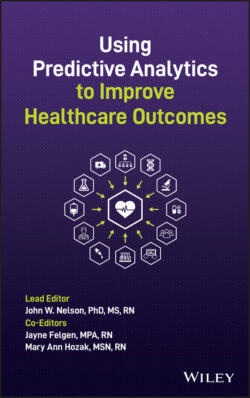Читать книгу Using Predictive Analytics to Improve Healthcare Outcomes - Группа авторов - Страница 61
“PSI RNs”: A Significant Structural Change to Support Performance and Safety Improvement Initiatives and Gain More Operational Insight
ОглавлениеIn our organization, a significant change brought about by these deep dives was the development of a “staff RN quality charge nurse” position. The charge of these nurses was to focus solely on performance and safety improvement (PSI). The PSI RNs are staff nurses who monitor care on a particular unit or division and identify the factors that impact practice. As experienced RN staff members, they can identify gaps in workflow and resources, redundancy in workload, and the competency levels of both new and experienced staff members. The PSI RNs noted where and when staff members created workarounds for care delivery because operational pauses prevented people from getting their work done. It made sense to look at workflow and workload at the unit level, since as first‐line workers, these PSI RNs were using their insight and experience to assess what was occurring operationally in patient care. The action plans that came from the data they provided could then focus directly on solving real‐life problems in the care delivery system. The thorough data collection the PSI RNs made possible meant we would get more and better insights into our day‐to‐day operations.
Once the data analyst and PSI RNs were in place, the organization made sure resources were available for them to do deep dives as a team. As each unit has its own culture and specific service line, the PSI RNs and the staff members of individual units came together to review the data reports from the analyst and discuss the “whys” and “hows.” They came up with responsive interventions that were specifically designed for their patient population, since what works in a pediatric unit, for example, may not work in an intensive care unit. This grassroots approach made sense to the team and led to greater staff buy‐in. It is largely staff‐to‐staff discussions, not manager‐to‐staff mandates, that create effective planning to meet the unit‐specific goals of excellence and positive patient outcomes.
It is largely staff‐to‐staff discussions, not manager‐to‐staff mandates, that create effective planning to meet the unit‐specific goals of excellence and positive patient outcomes.
The PSI RNs provided context and clarity, helping managers and staff members see how policies, standards, regulations, and best practice come together to define quality care. This support for the nurse manager helped facilitate the change to a high‐quality/high‐reliability culture on the units, ensuring that each unit was delivering high‐quality, evidenced‐based care around the clock. This work can be overwhelming in organizations where there is a clinical staff of 150 nurses in large units, such as in the emergency department. The addition of the PSI RNs provided a unique mediating and educating role which served to support both staff members and managers in establishing standards of quality that were consistent with policy.
The work of these teams also provided a great example of “measuring care delivery” when it came time to write our Magnet® document. The Magnet methodology sets the outline an organization must use to describe how data is used to improve care delivery as well as organizational and professional growth, within the context of the unit culture. Our new quality structure and process proved to be a benefit when it came time to write the Magnet application, because the data management process and the PSI RN role were based on an understanding of the drivers of the data, innovative action plans that answered “why” and “how,” and most importantly, they demonstrated sustained positive outcomes.
